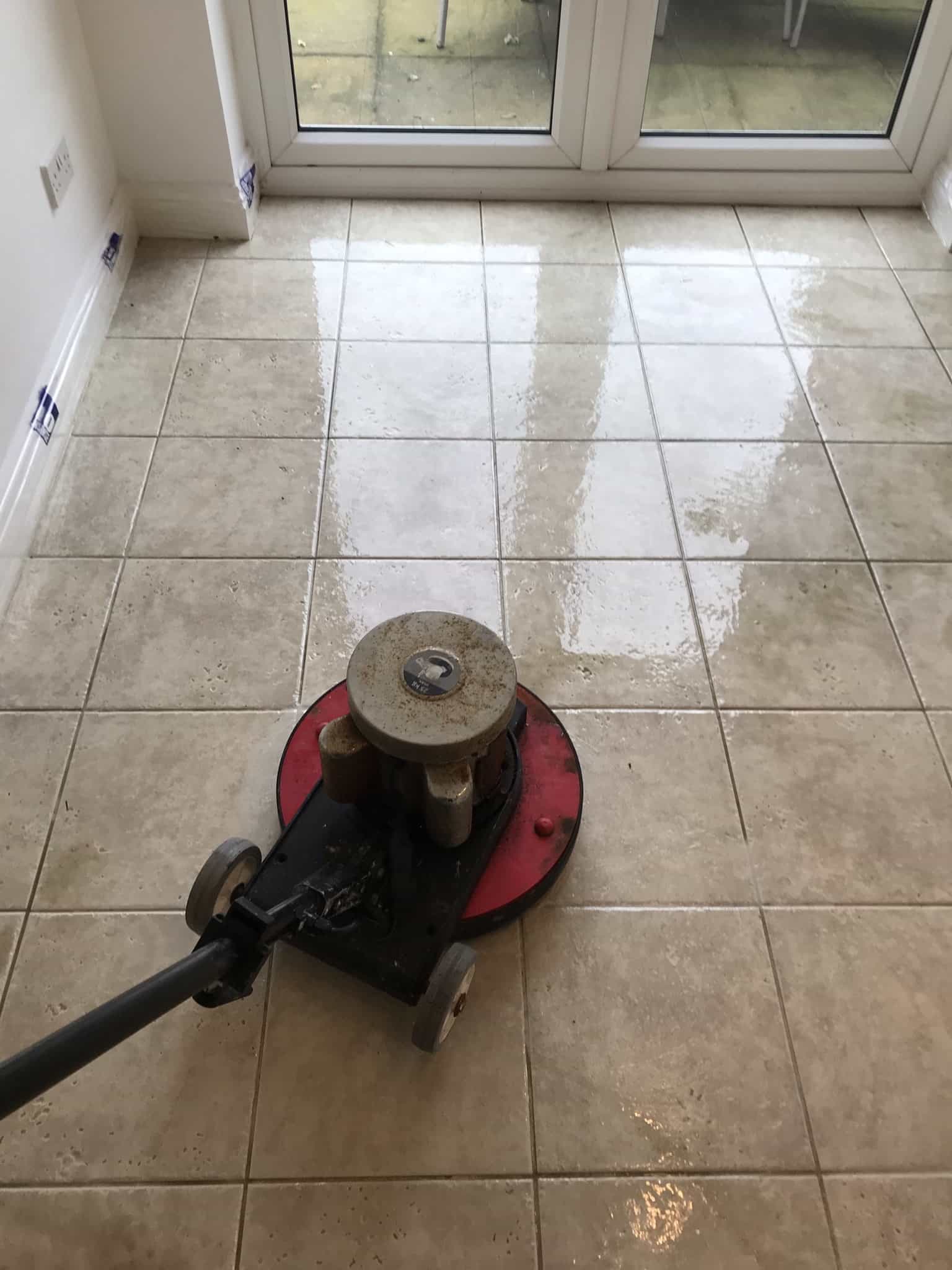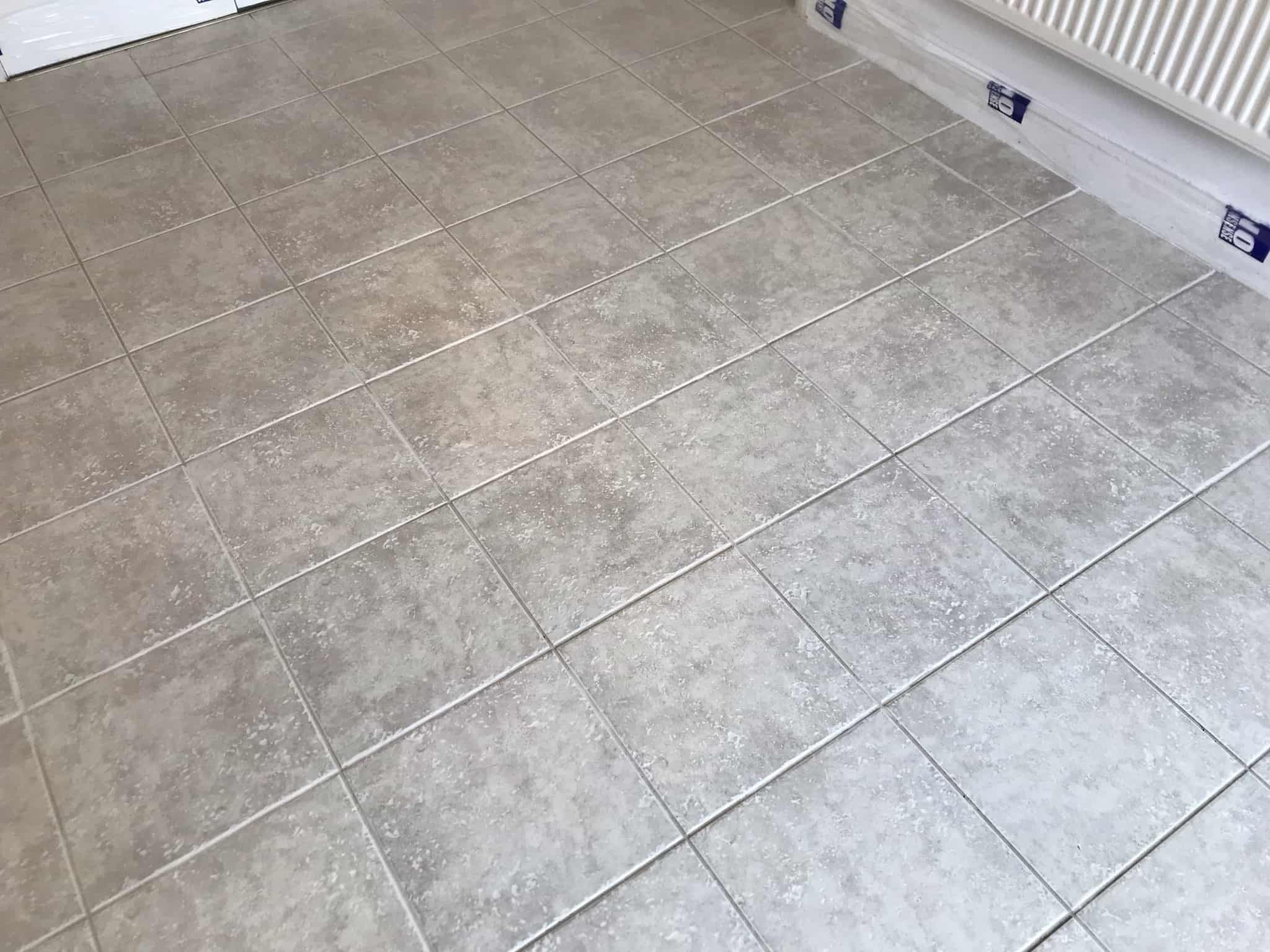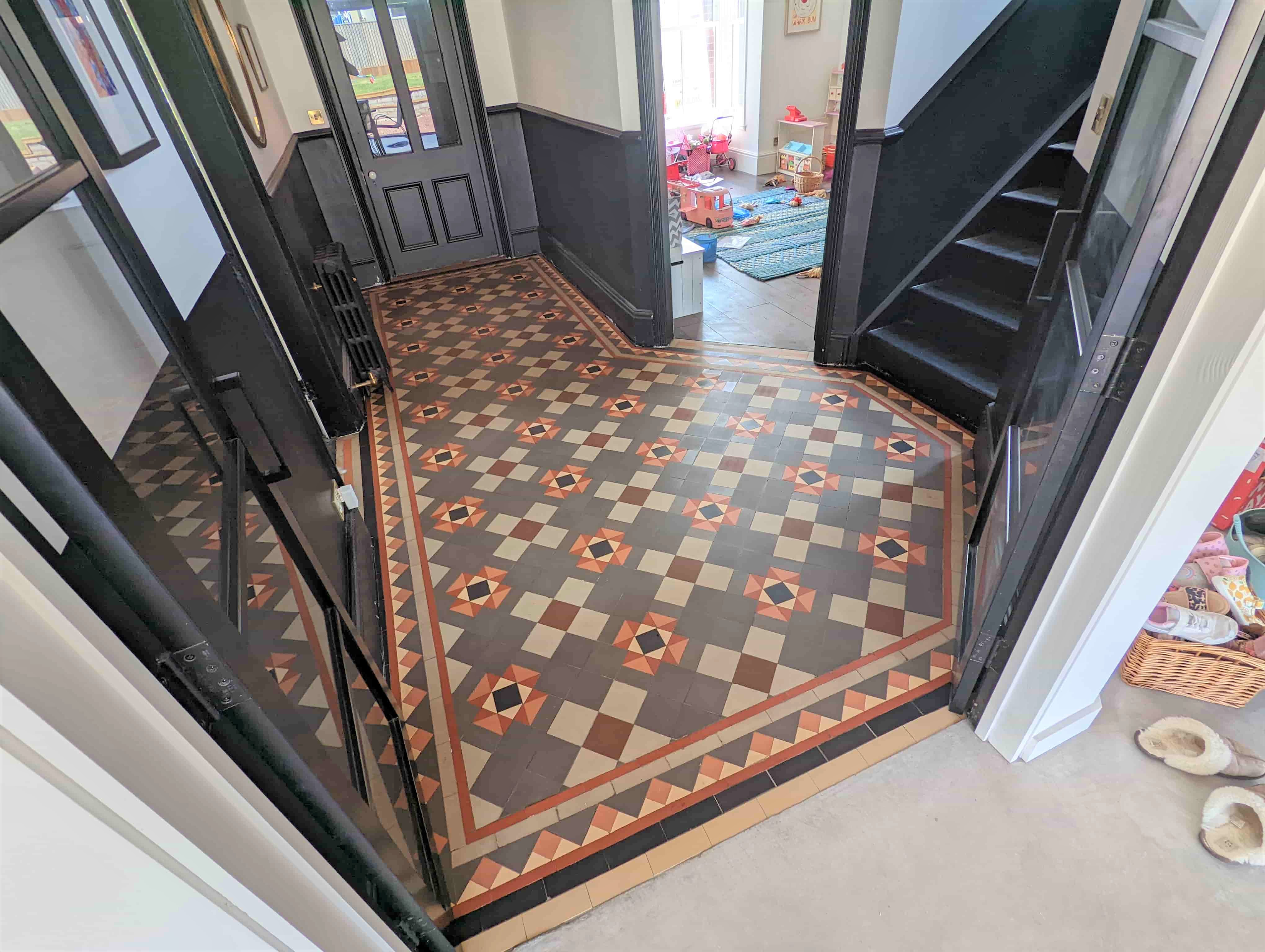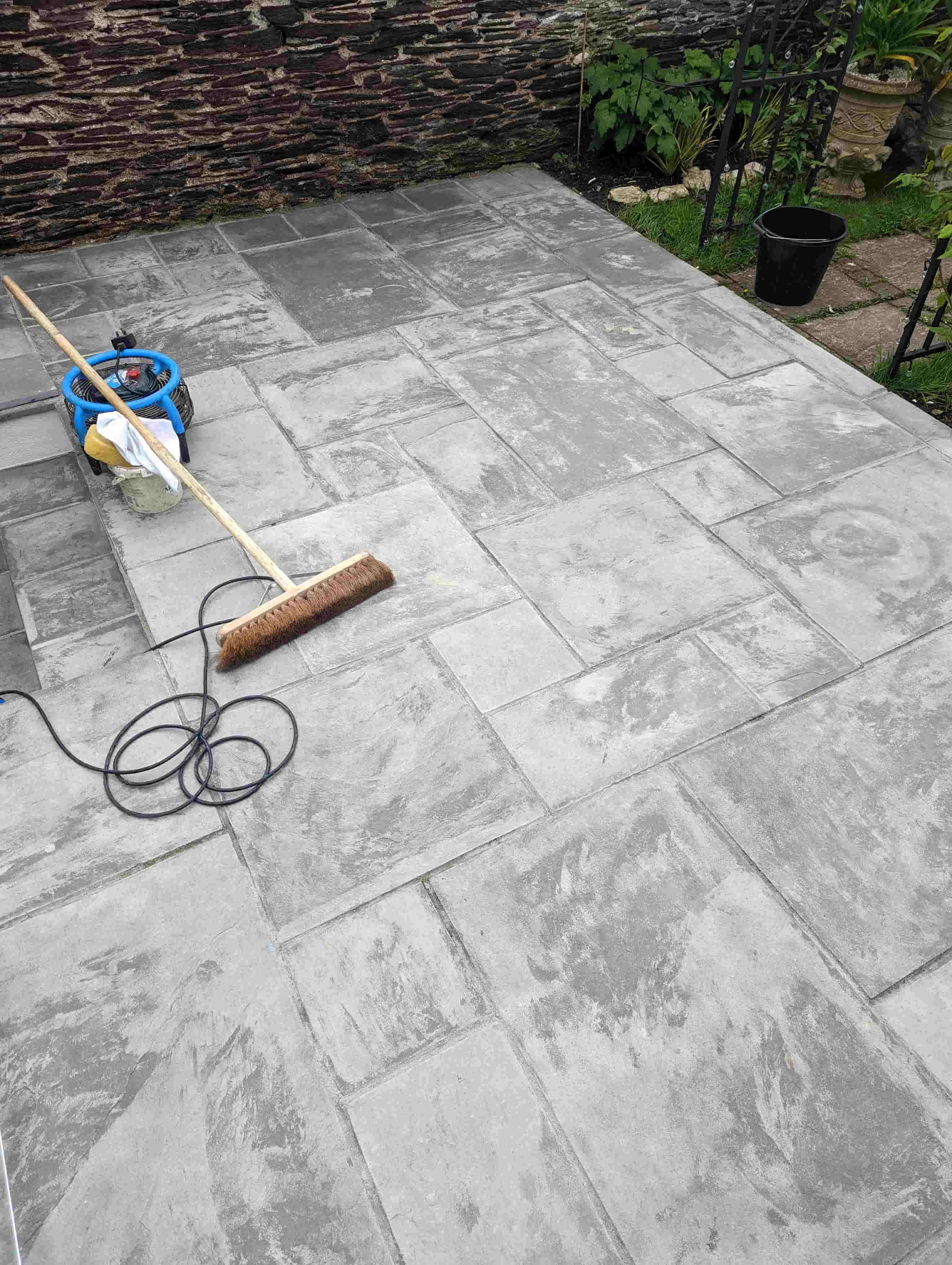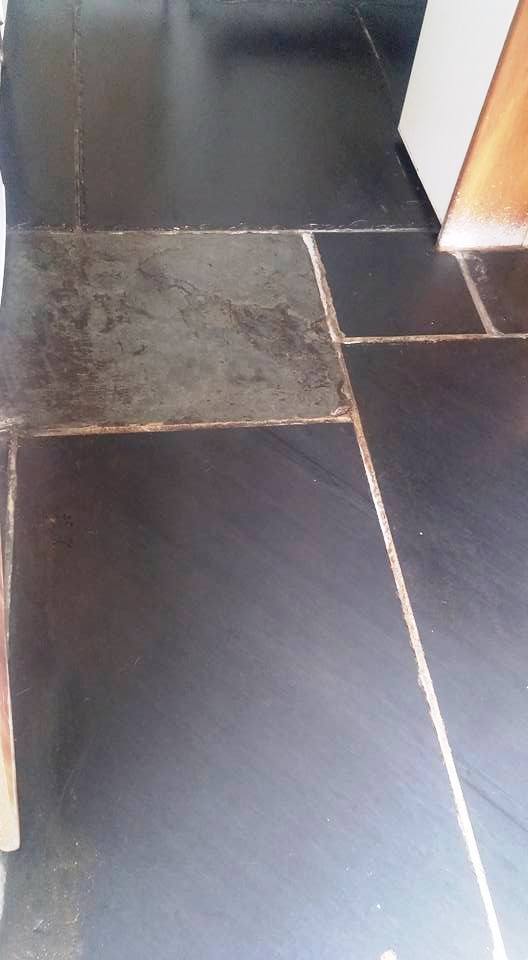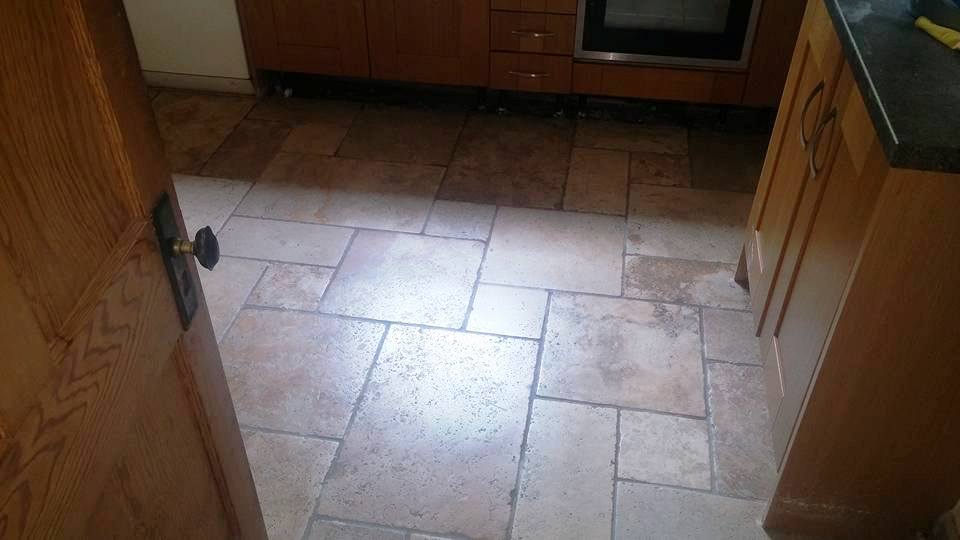Full Victorian Hallway Floor Restoration at Exeter Hotel
I received an inquiry from a client who was in the middle of converting and restoring an old manor house in Exeter, Devon and was keen to understand if her original Minton tiled floor could be salvaged and restored to a similar high standard which met that of the rest of the project.
The owners purchased this period property because of its characterful charm and original features, therefore if it was possible, they wanted to save the floor.

After booking in a survey, I arrived at the property and spoke with one of the owners and the site foreman. It was clear that when this property was in use as a hotel the hallway was utilised for the reception and desks and furniture had taken a real toll on a lot of the individual tiles, many of which were badly chipped, cracked, and damaged.
After inspecting the Victorian floor, I worked out a restoration plan and confirmed I could source matching replacement tiles. This enabled me to create an accurate price for the work which was agreed and I booked in a two-week slot with the owners to carry out the work.
Repairing and Deep Cleaning a Victorian Tiled Hallway Floor
I began the restoration by cutting out all the damaged and broken tiles which would need to be replaced, there were approximately 75 tiles that needed removing. After this I hand cut each coloured shaped tile by templating the originals and dry fitted before installing with adhesive.

After all the tiles had been cut, fitted, grouted, and set it was time to move on to cleaning with the aim of restoring the appearance of the whole floor to its original state. I did this by using Tile Doctor’s soft milling pads 100-grit through to 800-grit lubricated with Tile Doctor Remove & Go to help clean and remove any remaining sealer from the floor. The floor is rinsed after each pad and the resultant slurry extracted with a wet vacuum.
The next step was to give the floor an acid rinse using Tile Doctor Grout Clean-up which further cleans the tiles by removing grout haze and other contaminates. Being an acidic product, it has the added benefit of neutralising the pH level of the floor after the use of the alkaline Remove and Go earlier, it also microscopically etches the tile to improve the bond with the sealer which will be added later.

Sealing a Victorian Tiled Hallway Floor
At this point I left the floor to dry for a few days before returning to seal the floor using Tile Doctor’s X-Tra Seal which is a colour intensifying and breathable sealer. I applied two coats, allowing each one to dry before applying the next.
Once the sealer had dried, I buffed the floor with a White pad to remove any excess sealer and then ran a 1500-grit burnishing pad over the tiles which added a complimentary natural satin sheen to the tile faces throughout.

The hallway looked great, what a transformation, it really complemented the lovely ornate staircase and created a very welcoming entrance to the property. My clients were very satisfied that we had been able to complete such a good restoration and had brought the place back to life enhancing the period features as they had wanted.
Since completion of the job, this restoration has featured in the well-known ‘The Escape To The Chateau’ fan club page on Facebook.
Professional Restoration of a Victorian Tiled Hallway in Devon
Full Victorian Hallway Floor Restoration at Exeter Hotel Read More »



